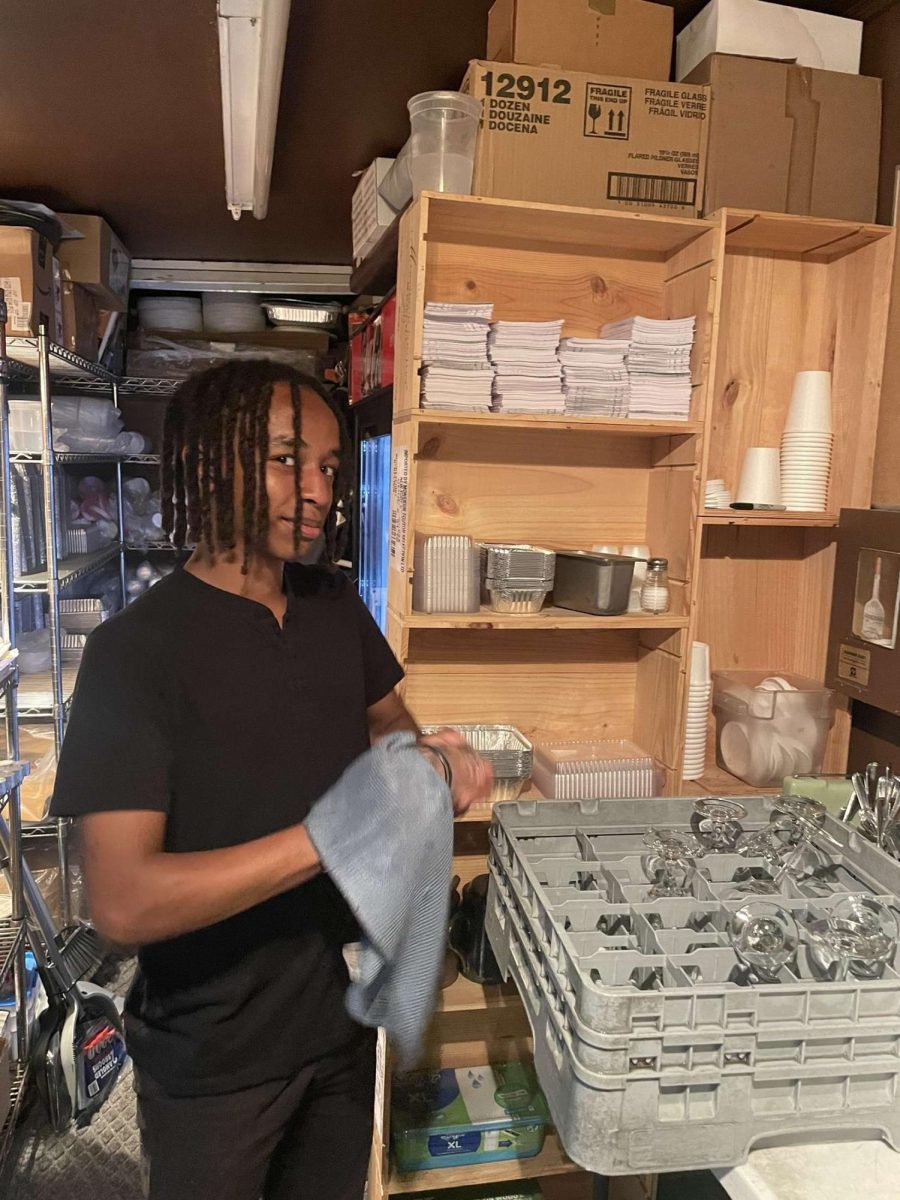Imagine this: you are sitting in your room, playing with your siblings. Suddenly, your older sister tells you that you’re adopted. You bicker about it for a bit before your mom comes in and scolds your sister for lying.
That “joke” is a classic. Sadly, just like most traditional jokes, calling your younger sibling adopted reinforces the stigma that being adopted means that you aren’t your parents’ real child.
This stigma hurts.
According to Adoption Network, there are an estimated 1 to 2 million couples who are waiting to adopt a child in the US. There are approximately 391,000 children in the foster care system. Out of those in the foster care system, only 114,000 kids are eligible for adoption.
To be eligible for adoption while in foster care, there are a few requirements. According to Considering Adoption, foster care is designed to put a child that is in an unsafe situation into a safe space until it is ok to return them to their birth parents. If it is found that the child’s biological parents can’t be trusted, they will lose their parental rights and the child will then be eligible for adoption.
Sadly, this seemingly safe system is not without its flaws.
The Tennessee House recently passed a bill that would protect potential foster parents who are anti-LGBTQ+ based on “religious or moral beliefs.” According to Tennessee, if a parent declines to foster a child that identifies as LGBTQ+, they would still be allowed to foster or adopt other children.
This bill allows foster parents to turn down someone based on their sexual or gender identity with virtually no consequences. It is unconstitutional and clearly discriminatory.
We need more foster parents, but we need people who will create an environment where the children they care for can feel safe enough to be their authentic selves.
So how can you help? You can start by changing your mindset.
Not every family looks the same. Some families have one parent, and some families have two; some families have parents of the same gender, and others have parents of different genders.
Every family is different. That doesn’t mean that one family is better than the other simply because it’s nuclear.
By shifting your mindset from “Families have a mom, a dad, and two kids” to “Families are all unique”, you can reduce the stigma surrounding not only adoptive kids, but many children who feel isolated because they have a different family.
Another way that you can help a child in need is to consider adopting and fostering when, most likely in the far off future, you want to start a family.
By choosing to adopt a child, you are giving someone a place where they can feel safe and loved. According to the Children’s Bureau of Southern California, adoption imposes a stable routine, improves you and your child’s health and well being, and can help you explore different cultures.
Fostering can also be helpful to kids, showing a child that they can love and be loved (SOS Illinois Children’s Village). Being a good foster parent can give hope to birth parents who might have had no choice but to place their kids in foster homes.
In short, the foster and adoption systems in the US need to be fixed, but the reforms start on an individual level. Considering your personal biases is the best way to do your part.
Give a Child a Home Through Adoption
By Claire Frischknecht
Imagine this: you are sitting in your room, playing with your siblings. Suddenly, your older sister tells you that you’re adopted. You bicker about it for a bit before your mom comes in and scolds your sister for lying.
That “joke” is a classic. Sadly, just like most traditional jokes, calling your younger sibling adopted reinforces the stigma that being adopted means that you aren’t your parents’ real child.
This stigma hurts a lot of people.
According to Adoption Network, there are an estimated 1 to 2 million couples who are waiting to adopt a child in the US. There are approximately 391,000 children in the foster care system. Out of those in the foster care system, only 114,000 kids are eligible for adoption.
To be eligible for adoption while in foster care, there are a few requirements. According to Considering Adoption, foster care is designed to put a child that is in an unsafe situation into a safe space until it is ok to return them to their birth parents. If it is found that the child’s biological parents can’t be trusted, they will lose their parental rights and the child will then be eligible for adoption.
Sadly, this seemingly safe system is not without its flaws.
The Tennessee House recently passed a bill that would protect potential foster parents who are anti-LGBTQ+ based on “religious or moral beliefs.” According to Tennessee, if a parent declines to foster a child that identifies as LGBTQ+, they would still be allowed to foster or adopt other children.
This bill allows foster parents to turn down someone based on their sexual or gender identity with virtually no consequences. It is unconstitutional and clearly discriminatory.
We need more foster parents, but we need people who will create an environment where the children they care for can feel safe enough to be their authentic selves.
Not only that, but siblings are frequently separated when put into foster care, which can lead to a lower self esteem and weaker relationships compared to siblings who were kept together, according to the SOS Illinois Children’s Village.
Along with that, it is estimated that over 48,000 kids are living in group homes or specialized care institutes, according to the Congressional Coalition on Adoption Institute.
So how can you help? You can start by changing your mindset.
Not every family looks the same. Some families have one parent, and some families have two; some families have parents of the same gender, and others have parents of different genders. The combinations are endless.
Every family is different. That doesn’t mean that one family is better than the other simply because it’s nuclear.
By shifting your mindset from “Families have a mom, a dad, and two kids” to “Families are all unique”, you can reduce the stigma surrounding not only adoptive kids, but many children who feel isolated because they have a different family.
Another way that you can help a child in need is to consider adopting and fostering when, most likely in the far off future, you want to start a family.
By choosing to adopt a child, you are giving someone a place where they can feel safe and loved. According to the Children’s Bureau of Southern California, adoption creates important relationships, imposes a stable routine, improves you and your child’s health and well being, and can help you explore different cultures.
Fostering can also be helpful to kids, showing a child that they can love and be loved (SOS Illinois Children’s Village). Being a good foster parent can give hope to birth parents who might have had no choice but to place their kids in foster homes.
In short, the foster and adoption systems in the US need to be fixed, but the reforms start on an individual level. Considering your personal biases is the best way to do your part. If you are even thinking about beginning a family, fostering can be a great place to start; meanwhile, adoption is an opportunity to give a child a loving home and a wonderful family.
Notes and References
Statistics
2019 – 115,353 adoptions
It is estimated that 1-2 MILLION couples are waiting to adopt
Insane
“The percentage of African American children who are adopted from foster care is disproportionately represented.”
Close to 60% of children in foster care spend two to five years in the system before being adopted. Almost 11% spend five or more years in foster care before being adopted.
Open Adoption
Open adoption is when the adoptive family keeps contact with the adopted child’s birth family
95% of domestic INFANT adoptions are open
Lots of good statistics – Here!
9% of kids age out of the foster care system
Over 48,000 kids don’t live with a family
Orphanages are more professionally known as residential care facilities
Maybe using that phrasing will help with search for approx. amount of children that don’t get adopted?
Read through this article
Barriers in US adoption link
Foster care adoption link
Child mistreatment in foster care link and other link
Timeliness: TN House Anti-LGBTQ bill for foster parents
Link to Children’s Bureau of Southern California (bc i ran out of colors)
Link to SOS Illinois Children’s Villages
OPINION: The US adoption and foster care system need to be fixed, and people should consider adopting and fostering when wanting to start a family.







